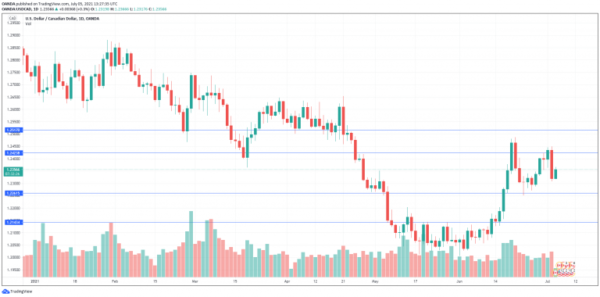The Canadian dollar has started the week with losses. In the North American session, USD/CAD is trading at 1.2457, up 0.31% on the day.
The US dollar ended the week on a downturn against most of the majors. The Canadian dollar jumped on the bandwagon, as USD/CAD fell 0.92% on Friday.
The reason for the US dollar’s downturn was the surprising surge in the US unemployment rate, which rose from 5.6% to 5.9. The jump in unemployment made investors uneasy, with growing speculation that the labour market is still not strong enough to push the Fed to tighten policy. Nonfarm payrolls was solid, as the reading of 850 thousand dwarfed the consensus of 700 thousand. Despite the positive NFP report, the US dollar ended the week on a sour note.
With US companies struggling to find workers, some 15.3 million Americans are receiving unemployment benefits. The shortage in labor supply has led to increased wage and inflation pressures. Wages soared to 3.6% in June YoY, just shy of the estimate of 3.7%, and sharply higher than the May release of 1.9%. Higher wages will mean higher inflation, and that could put pressure on the Fed to tighten monetary policy.
Canada’s economy contracted in April, but the drop was not as sharp as anticipated. The decline of -0.3% was smaller than the flash estimate of -0.8%. The country’s vaccine rollout, which has lagged behind most major economies, is accelerating and this should allow for a further reopening of the economy. According to a Scotiabank forecast, growth is expected to recover to pre-Covid levels in the third quarter of 2021 and should continue moving upwards into 2022.
USD/CAD Technical
- There is resistance at 1.2423, followed by resistance at 1.2517
- On the downside, there is support at 1.2261. Below, there is support at 1.2143














